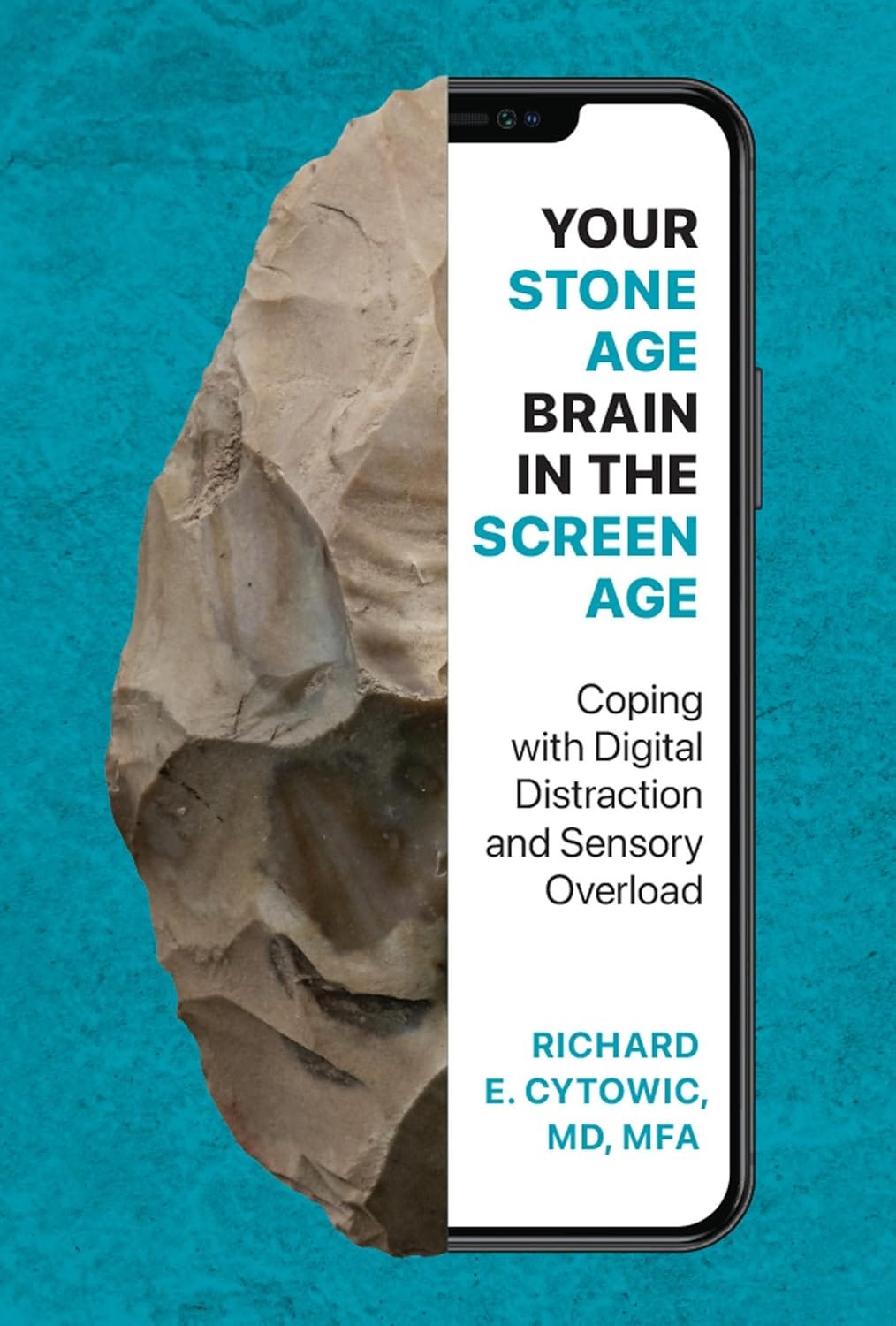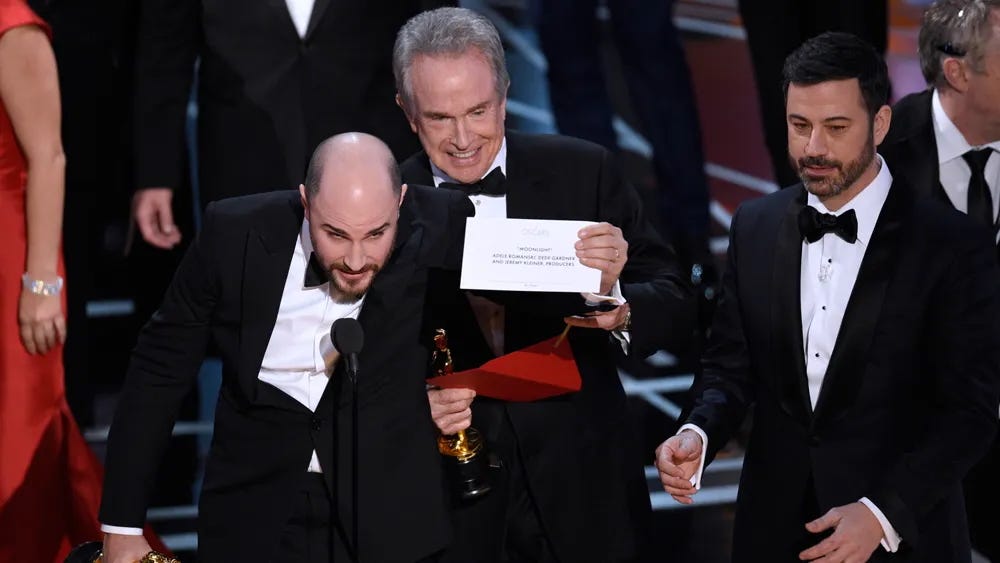Stone Age brains vs. digital overload. Embrace mindful tech use and disconnection for well-being.
Stone Age brains vs. digital overload. Embrace mindful tech use and disconnection for well-being.
There’s no way that our brains are built to be exposed to so much information.
As a kid growing up in the ’80s without the internet and with just three TV channels — with the promise of hundreds more through the vast new world of cable television — when we wanted information, we had to go get it.
News? Go to a newsstand — yes, that was a real thing, not just something from old-timey movies.
Facts? Walk to the library, that big boring building usually next to the police station.
The weather? Look up.
And it was like that for over a hundred years.
Then came the internet. At first, it required some effort. You had one computer in the house that the whole family shared, and it was painfully slow to load pictures and texts. Forget about video — pack a lunch.
But then the smartphone came along. All the power of the internet harnessed in a handheld device that could give you everything, anything, and most times nothing you wanted.
This major shift in the information firehose of death has occurred in less than 20 years. There’s no way that our brains can adapt; it might take centuries.
Apparently, a world-famous neurologist and I are on the same wavelength. Who needs a degree from William Paterson University? Not me.
Richard Cytowic has just published a book titled “Your Stone Age Brain in the Screen Age: Coping with Digital Distraction and Sensory Overload,” arguing that our brains are still essentially “Stone Age” organs, ill-equipped to handle the constant barrage of digital stimulation we face daily.
I knew it!

It turns out this mismatch between our ancient brains and our hyper-modern technology has huge effects on our attention spans, our ability to learn, and even our social skills.
One of the most significant challenges our brains face in the digital age is our limited energy bandwidth. Richard explains that the brain, despite accounting for only 2% of our body mass, consumes a whopping 20% of our daily calories. Our brains work harder than Ozempic!
This energy is mostly used to maintain the brain’s physical structure, leaving a limited amount for mental processes. That limited energy capacity has serious implications for our ability to multitask. Richard says that true multitasking is a myth.
I’m screwed.
Instead, what we call multitasking is actually “shuttling” between different tasks, rapidly shifting our focus back and forth. This constant switching is incredibly energy draining, leading to fatigue, reduced productivity, and even potentially dangerous errors.
He uses the example of the “Great Oscar fiasco of 2017,” where La La Land was mistakenly announced as Best Picture instead of the real winner, Moonlight. Who can forget, especially Faye Dunaway and Warren Beatty, who made the announcement?
The reason: The accountant responsible for the envelopes was simultaneously live-tweeting, exhausting his working memory and causing him to grab the wrong envelope.

The constant pull of our devices is not accidental. Richard explains that screens are designed to exploit our brain’s reward system through “positive intermittent reinforcement.” Like slot machines, our devices offer unpredictable rewards in the form of notifications, likes, and new content, keeping us hooked in a cycle of swiping and scrolling. This can lead to behavioral addiction, similar to addictions to gambling, shopping, and porn.
The appeal of these devices is intensified by their perpetual presence in our lives. From smartphones to smartwatches to smart glasses, tech is becoming increasingly integrated into our lives, making it harder than ever to escape the digital onslaught.
The excessive use of screens has even scarier consequences for children. Richard talks about a phenomenon he calls “virtual autism,” where heavy screen use leads to autism-like symptoms, including reduced eye contact, limited verbal interaction, and difficulty responding to social cues. These symptoms are often accompanied by tantrums and meltdowns when screen time is restricted. I was a dick when I was a kid; I can’t imagine what kind of dick I would have been with an iPad in my car seat.
Richard draws a parallel between parents who allow excessive screen time and parents who smoke in front of their children while telling them not to. In both cases, adults are modeling unhealthy behaviors that can have long-term negative consequences for children.
Richard acknowledges that businesses and organizations are increasingly recognizing the importance of employee well-being. But he believes that a more holistic approach is needed, one that addresses not only sleep hygiene but also the need for digital detox and mindful technology use. He suggests that employers should encourage employees to take breaks, set boundaries around technology use, and create a work environment that supports both productivity and well-being.
So what the hell are we supposed to do? Get off the grid? Have a smartphone-burning party? Tell mom to delete Facebook?
Well, to counter the negative effects of tech, Richard advocates for the importance of silence and disconnection. He says that silence is an “essential nutrient” for our brains, allowing us to recharge, reset, and reconnect with ourselves. Simple practices like taking short breaks to look out the window, going for walks in nature, or meditating can give us a much-needed respite from the digital world.
Richard stresses that we need to be more mindful of our technology use, questioning whether it is truly enhancing our lives or simply distracting us from what matters most. He urges us to resist the “fear of missing out” (FOMO) that keeps us tethered to our devices, reminding us that the true cost of constant connectivity is often our own lives.

Let’s face it, technology is both ubiquitous and unavoidable, but it’s more important than ever to be aware of its impact on our brains and to take steps to mitigate its potential harms. By understanding the limitations of our “Stone Age” brains and prioritizing practices like silence, disconnection, and mindful technology use, we can navigate the digital age with greater awareness and create a healthier relationship with technology, both for ourselves and for generations to come.